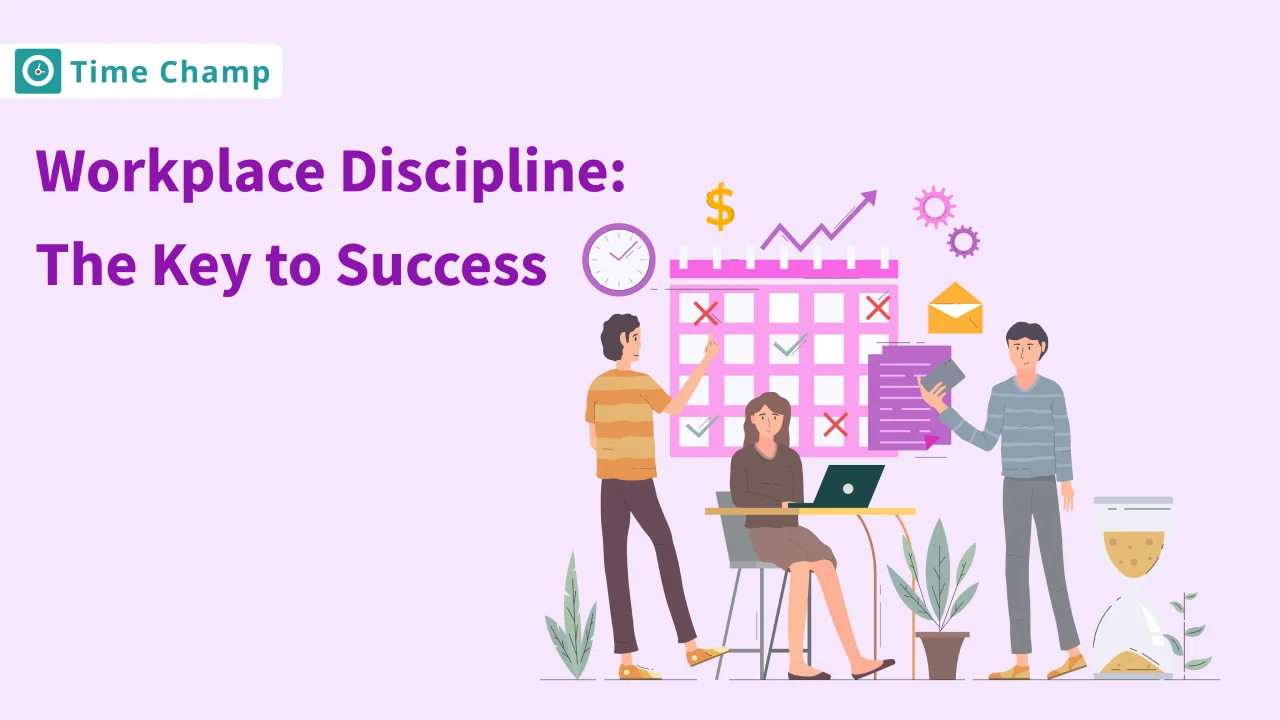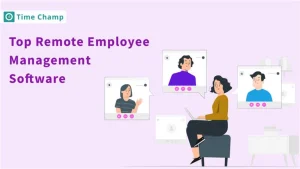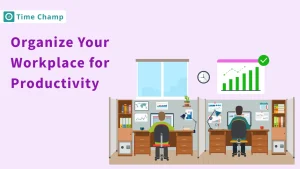What is Workplace Discipline?
Workplace Discipline refers to the policies, practices, and actions implemented within an organization to ensure employees adhere to established rules, regulations, and behavioral standards. It involves maintaining order, accountability, and a positive work environment by addressing misconduct, underperformance, or violations of company policies.
Why is Workplace Discipline Important?
Workplace discipline is the backbone
of a smooth, and productive
environment. When there’s
discipline, everyone in the company
benefits, helping the business grow.
Let’s have a look at the
benefits that it brings to the
table!
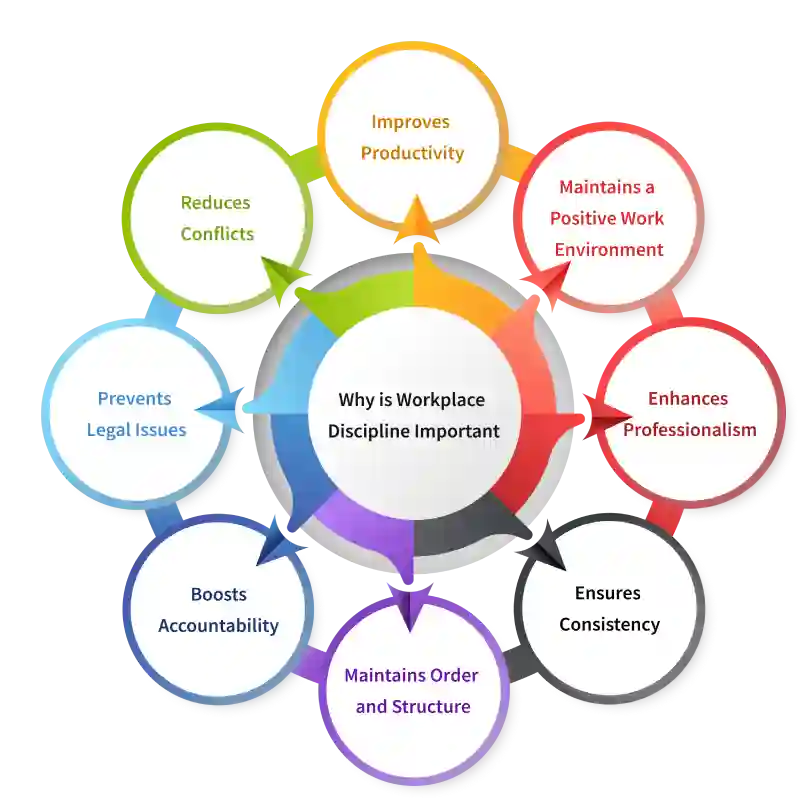
1. Improves Productivity
Discipline helps employees stay focused and cut down on distractions. When everyone knows what’s expected and follows the rules, things get done more smoothly and quickly. It keeps employees on track, and motivates them to meet deadlines and do their best work. With fewer interruptions and more focus, the team can get more done in less time and achieve better results.
2. Maintains a Positive Work Environment
A disciplined workplace provides a professional environment based on a consistent set of rules and regulations. When the expectations of the employees are clear it leads to trust and harmony in the workplace. Since everyone behaves this way, there is little chance that there will be conflicts and misunderstandings. This positive environment enhances the morale of people in that they feel encouraged to work harder and in unison as a team.
3. Enhances Professionalism
Discipline helps to build a good professional culture among the employees. In particular, strict rules concerning punctuality, communication, and behavior help the employees to look well, and it is very important for them to do it. Such professionalism does not only make the interactions between team members more professional but also makes the company’s image professional when dealing with clients, customers or other outside partners. The culture of professionalism can foster trust in the organization and makes the workplace to be more believable and dependable.
4. Ensures Consistency
Another advantage of discipline is that it promotes compliance with rules and policies within the company at all levels. It is easier to avoid misunderstandings and appease the unfair preferences when all employees are treated equally. Workers understand clearly what is expected of them, and the decisions made are not influenced by biasness. This consistency makes it easier to create a more trusting environment to work in thus making the workplace more trustworthy.
5. Maintains Order and Structure
Discipline creates a clear structure where roles, responsibilities, and expectations are defined. This structured approach minimizes chaos and ensures that everyone knows what is expected of them. It streamlines operations, making it easier for the team to focus on reaching common goals without getting sidetracked by misunderstandings or lack of direction.
6. Boosts Accountability
When employees are aware of the standards expected of them, they become more accountable for their actions. Knowing they will be recognized for good work and held responsible for shortcomings encourages employees to take ownership of their tasks. This increased sense of accountability leads to improved work quality, increased dedication, and a greater willingness to contribute to the success of the team.
7. Prevents Legal Issues
Proper workplace discipline helps prevent legal problems by creating a clear, well-documented system for addressing misconduct or underperformance. When policies are fair, consistent, and enforced in line with legal guidelines, they minimizes the risk of disputes or lawsuits. This approach ensures that all actions taken are based on established principles, rather than personal bias or arbitrary decision-making.
8. Reduces Conflicts
A disciplined workplace provides clear rules and consequences for actions, which helps prevent misunderstandings and conflicts. With established procedures in place for resolving issues, employees know how to address problems calmly and constructively. This clear framework allows for prompt resolution of disputes before they escalate, leading to a more peaceful, productive work environment overall.
Want to build a disciplined and productive workplace?
Try Time Champ to track, manage, and enhance workplace efficiency effortlessly!
Sign up for FreeBook DemoWhat are the Various Workplace Discipline Methods?
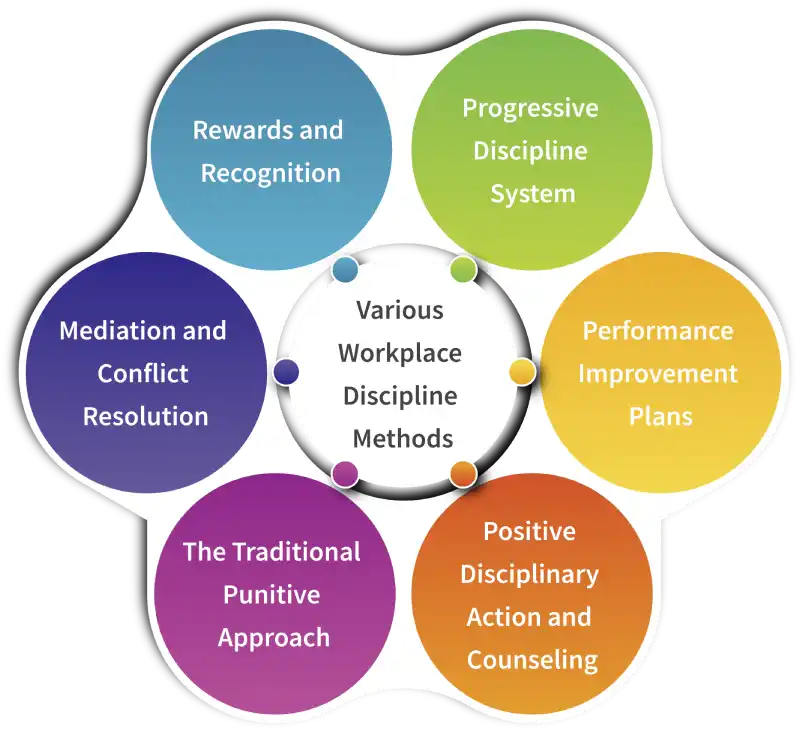
1. Progressive Discipline System
The progressive discipline system is
like a step-by-step guide to
addressing employee issues fairly
and transparently. It starts with a
simple verbal warning such as a
friendly nudge to remind employees
of workplace expectations. If it
persists, it goes to a written
warning, which formalizes the
matter. Sometimes, it may also lead
to temporary suspensions, and in
serious situations, it can lead to
termination. This method makes sure
people can try again and improve.
Keeping track of each step makes
things clear and helps protect the
company. When employees know the
rules and receive support, they’re
more likely to turn things around
and thrive.
Why does it
work?
This type of
approach helps the employees to
improve themselves with the results
of their behavior and gives them
good chances to improve it.
2. Performance Improvement Plans (PIPs)
A Performance Improvement Plan is
like a roadmap that is designed to
help employees get back on track. It
structures clear goals, specific
steps, and realistic deadlines for
employees so that they understand
what’s expected from them.
For
instance, if deadlines are a
problem, a PIP might give training
or a mentor to help. The best part
of a PIP is regular meetings to
check progress, solve problems, and
change the plan if necessary. It
also helps employees to improve
themselves, making the workplace
better and more efficient.
Why does it
work?
PIP work
lays down specific trackable targets
for employees. This identifies
performance gaps and helps to
improve the relevant areas.
3. Positive Disciplinary Action and Counseling
Positive disciplinary action is all
about fixing issues with empathy
rather than punishment. Imagine
having a chat with your manager to
understand what’s going wrong and
how to improve. That’s the essence
of counseling.
For example, if
personal stress lowers an employee’s
work, the manager might suggest
flexible hours or offer help through
an Employee Assistance Program
(EAP). This helps both sides:
employees feel valued, and managers
build trust and a better team. It
shows the company cares about
people, not only the job.
Why does it
work?
This
strategy works well because it turns
discipline into a chance to learn,
not punish. It helps employees
feel more motivated and
improve their attitude towards
managers, boosting morale.
4. The Traditional Punitive Approach
The traditional punitive approach is
straightforward: there are always
repercussions when rules are broken
or when misconduct occurs. These
might include pay cuts, demotions,
or in extreme cases, termination. Of
course, this method is necessary
when serious cases such as
harassment, fraud, etc. However,
overusing it can lead to a negative
work culture and fear. That’s why
it’s best paired with other
approaches that encourage
collaboration and learning. Clearly
explaining the rules and
consequences helps employees
understand what’s important and see
the process as
fair.
Why does it
work?
It says this
behavior isn’t allowed and explains
what will happen if it happens
again, which helps avoid trouble.
5. Mediation and Conflict Resolution
Mediation, provided through a neutral
third party, helps resolve conflicts
by allowing the conflicting parties
to express their views and negotiate
the necessary solution. Workplace
discipline comes from working
together and being respectful,
making sure problems are solved
fairly.
What it is and
the reasons why it
works!
Mediation
is a process whereby an unbiased or
impartial third party facilitates
discussions and develops a
settlement between conflicting
parties. If parties work together
and share different points of view
they arrive at an agreed-upon
solution, which promotes discipline
via teamwork and respect.
6. Rewards and Recognition
Discipline doesn’t always mean fixing
problems—it can also mean
celebrating successes. Rewards
and recognition are an
effective way to encourage positive
behavior. Recognizing employees who
go the extra mile—whether it’s with
a bonus, promotion, or just a
thank-you in a meeting—shows
everyone what’s valued. This type of
appreciation motivates employees to
work better and makes them feel
happy. Being able to constantly
celebrate these successes is an
effective way of ensuring that
discipline becomes part of the
culture and that morale within the
workplace remains
high.
Why does it
work?
These
programs not only encourage good
behavior and performance but also
reward employees who follow the
rules and meet or exceed
expectations. They work well because
they create a positive workplace,
and employees are motivated to keep
up high standards.
Steps for Effective Discipline at the Workplace
1. Know What the Law Says About Employee Discipline
Disciplinary actions vary based on the issue’s severity and frequency, ranging from coaching to formal warnings. However, U.S. federal laws do not mandate how employers should go about disciplining their employees; they have some leeway. However, these laws regulate how discipline and termination are undertaken: the WARN Act (for specific industries), the National Labor Relations Act (for unionized employees), rules against age discrimination, and civil rights.
Understanding the laws that apply to
your workplace is key to handling
discipline properly. Make sure
you’re aware of the main rules at
the local, state, and federal levels
before doing anything. It’s
important to know employees’
rights, laws that stop
discrimination, and any rules for
the specific job field. Staying
updated about these new rules and
regulations helps from being in
legal cases.
It is better to
have a lawyer review your employee
discipline in the workplace policies
in the employee handbook to stay
safe.
2. Establish Clear Rules for Employees
You can’t just assume that employees
know everything about the rules and
policies. Make sure workplace rules
are clear so employees know what is
expected. Write these rules in the
employee handbook. For instance, if
you use at-will employment, explain
that either side can end the job at
any time without any notice.
You can set dress codes, but
follow anti-discrimination laws.
Explain to employees how they should
behave with customers properly, and
the kind of tone and language they
should use. Include what tasks need
to be done, how much work is
expected, and rules about being on
time. Communicate
clearly about mobile usage in the
workplace. It is necessary to say
that stealing, using drugs, being
drunk, or violence will result in
immediate dismissal.
3. Follow Your Guidelines
Discipline is not only important but
must be consistent with the aim of
the disciplinary action. Sometimes
it is possible to make exceptions,
but this always creates the
impression that someone is favored
or discriminated. It is fair and
transparent to apply all the set
guidelines to everyone.
For
instance, if the rule is three
warnings for absences, make sure
it’s the same for everyone. Staying
consistent makes the workplace fair
and shows you’re a reliable leader.
4. Decide on a Discipline Method
Choosing the right way to handle
discipline is important for helping
employees improve while keeping a
positive workplace. The method you
pick should match how serious the
issue is.
For instance, a
simple verbal warning is enough for
small mistakes. But when the mistake
crosses the line, you can even
suspend the employee. A good
approach is a progressive method
that increases the penalty for
repeated issues. This gives
employees a chance to fix their
behavior before facing several
serious consequences.
5. Document Employee Discipline
Documentation is a vital part of
workplace discipline, creating a
clear record to protect your
business during disputes or legal
challenges. Record details like the
issue, actions taken, dates,
witnesses, and communication to
ensure fairness and transparency.
This not only prevents details from
being forgotten but also serves as a
reliable reference for evaluations
and decisions.
There are two
types: employee file notes, private
records tracking behavior patterns,
and written warnings, formal
documents shared with employees
signaling that further action may
follow if improvements aren’t made.
Proper documentation ensures
fairness and avoids sudden actions
that may seem unjustified to
employees.
6. Establish Clear Rules for Managers
Training managers often, having clear
guidelines, and keeping simple
records can really make a
difference. Trained managers can
quickly see issues, handle them
well, and create a fair, respectful
work environment. Shared forms and
easy rules make it simple to stay
fair and build trust.
Fairness
isn’t just important—it’s
everything. Inconsistent treatment
doesn’t just harm team morale; it
invites unnecessary legal headaches.
Pay attention during reviews to find
unfairness and take care of it right
away. Apart from creating good
places to work, effective leadership
leads to appreciation, recognition,
and motivation of the employees.
7. Get the Right Mindset
Workplace discipline should be seen
as an opportunity for growth, not
punishment. When employees view it
this way, they are more likely to
engage and improve. Encourage open
communication, listen to concerns,
and provide guidance. This kind of
coaching fosters responsibility and
redounds to the advantage of the
worker and the firm.
Managers
should avoid treating discipline as
punishment. Consequences can be
negative, creates resentment, and
lead to people leaving the company.
A supportive, growth-focused
approach helps retain staff and
fosters a positive work environment.
Want to build a disciplined and high-performing workplace?
Time Champ helps you track productivity, enforce policies, and build a high-performing team. Try it today!
Sign up for FreeBook DemoThe Best Approach to Workplace Discipline
1. Create an Employee Handbook
An employee handbook is an important guide that explains the company’s rules, values, and policies. It helps employees know what’s expected of them, how to behave, and what happens if they don’t follow the rules. By including company values, a code of conduct, and details about employee rights, it helps create a positive work environment. When properly written, it makes sure that everyone is in harmony, and there is a ready resource when dealing with such problems.
2. Establish Continuous Training Programs
Ongoing training ensures employees remain updated on company policies, industry standards, and personal development skills. Programs that teach conflict-solving, communication, and rules help improve work and stop issues from coming up. The consistent offer of such sessions makes employees more confident and maintains organizational efficiency and standards.
3. Conduct Performance Discussions
Open communication between employees and supervisors through regular performance meetings is an effective way to implement constructive discipline. This approach encourages giving and receiving feedback, setting clear standards, and taking consistent actions.
4. Choose Appropriate Disciplinary Methods
We have discussed various disciplinary methods previously. Actions should be based on how serious the problem is. Start with a verbal warning and move to stronger actions if needed. For minor problems, more training may be enough. The goal is to help employees get better, not punish them.
5. Be Consistent
Consistency in applying discipline fosters fairness and trust. By following company policies and treating all employees equally, you ensure that everyone understands the rules. Documenting disciplinary actions helps track progress and ensures that decisions are based on facts, not favoritism.
6. Get all Sides to the Story
Before you wrap up a disciplinary talk, find out if there’s a reason for the behavior. Are personal issues or other employees part of the problem? Getting all the facts stops you from making a quick, wrong decision.
7. Provide a PIP
A Performance Improvement Plan (PIP) is a helpful tool to guide employees who need to improve their performance. It sets clear goals and deadlines, and offers support to help employees do better. Regular meetings make sure employees are doing well and have what they need. A PIP helps employees improve their work and supports the company’s success.
Conclusion
Workplace discipline is key to a positive and productive environment. Clear expectations and fair treatment help employees perform at their best and contribute to the company’s success. By focusing on growth, support, and fairness, managers can create a respectful and motivating workplace where everyone thrives. Discipline isn’t just about rules—it’s about guiding improvement for both employees and the business.
Boost Productivity with Time Champ!
Track work hours, enhance accountability, and streamline performance management—all in one powerful tool.
Sign up for FreeBook DemoFrequently Asked Questions
Discipline helps everyone know the rules, so there’s no confusion about what’s okay and what’s not. It makes workflow better and feels less overwhelming.
There’s often a process, starting with a friendly reminder, followed by a written warning if needed. Serious actions only come later or for major problems like harassment.
Not at all! Discipline means guiding positive actions. Saying thanks, giving rewards, or sharing good feedback shows employees their hard work matters and keeps the workplace happy and encouraging.
It’s not just about rules, it’s about making sure work gets done smoothly and fairly. Having discipline at work makes it easier to trust each other, avoid problems, and reach goals together. It helps both the employees and the company.
